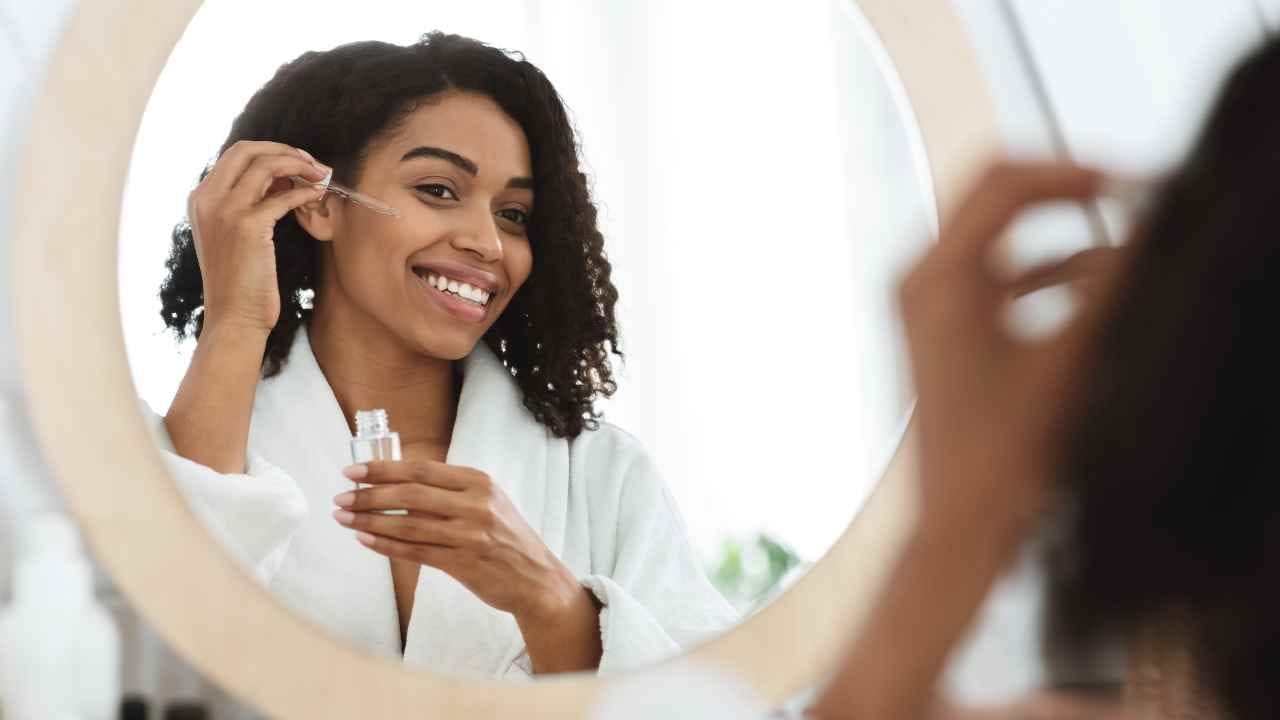
How Many Serums Can You Use at Once? Try Skin Cycling!
Serums have become a staple in many skincare routines, providing numerous benefits for our skin, such as hydration, protection and anti-aging effects.
However, as more and more serums hit the shelves each day, it can be overwhelming to decide on which ones to use or if you can layer serums all at once.
In this post, we will answer the question that has been bothering many beauty enthusiasts: Can you use multiple serums at once?
We've done our research and gathered the expert opinions to give you the most comprehensive advice about whether you should use more than one serum at a time.

What is Serum?
Before we dive into serum layering, let's first define what a serum is.
A serum is a lightweight, highly concentrated liquid that penetrates deep into the skin to deliver active ingredients such as vitamins, antioxidants and peptides.
There are many different types of serums that include anti-aging ingredients including retinoids, hyaluronic acid, vitamin C and even natural ingredients such as turmeric and even tomato!
The number of serums you can use depends on the ingredients and formulations of the serums you choose.
How Many Serums Should You Use?
Generally, experts recommend using no more than two or three serums at a time. Using too many serums can overburden your skin, making your skin more prone to breakouts.
Instead, keep it simple and target the specific concerns you have.
For example, you can use a vitamin C serum in the morning for its brightening and antioxidant benefits, followed by a hyaluronic acid serum to hydrate and plump the skin.
At night you can choose a retinol serum to combat signs of aging. However, some serums can be layered to maximize their effects.
For example, if you have dry skin that needs hydration, you can layer a hyaluronic acid serum with a facial oil like squalane oil and a moisturizer to seal in the moisture.
If you have pigmentation or dark spots, you can layer vitamin C serums with niacinamide serums to fade the spots even faster and leave you with a more even skin tone.
The key is to choose serums with complementary ingredients and allow each one to absorb fully into your skin before applying the next layer.

Which Serum Do You Apply First?
Another factor to consider when using multiple skin serums is the consistency of the serums.
A general rule of thumb is to apply serums based on their consistency, starting with the lightest (most watery) and ending with the heaviest.
For example, if you are using a light hyaluronic acid serum and a heavier facial oil, you should apply the hyaluronic acid serum first, followed by the facial oil.
This ensures that each antioxidant serum can penetrate into the skin and provide optimal benefits without interfering with the next layer.
Listen to Your Skin
Lastly, it is important to monitor how your skin reacts to the serums you are using. If you notice any irritation, redness, or breakouts, it may be a sign that you are overloading your skin with too many products.
Consider scaling back on the number of serums you are using or switching to gentler formulations that are more suited to your skin type.
Or, you can try the system created by Dr. Whitney Bowe, a dermatologist. Keep reading to learn how it works!

Skin Cycling: The Latest Trend in Skincare
TikTok and beauty blogs are loving this new skincare trend!
This method was created by dermatologist Dr. Whitney Bowe, and it involves rotating your skincare products throughout the week to avoid over-exfoliating your skin.
Here is how it works and the benefits it can bring to your oily skin, dry skin, or really any skin type.
Exfoliation Night
The first step in skin cycling is exfoliating. Exfoliation removes dead skin cells, unclogs pores, and improves your skin’s texture.
But, we're not talking about a grainy scrub here. You want to use a chemical exfoliant. Chemical exfoliants include AHA's and BHA's.
AHA's and BHA's are exfoliating acids that can help keep the skin looking clear, healthy and radiant.
AHA stands for alpha hydroxy acid, whereas BHA stands for beta hydroxy acids.
Both beta and alpha hydroxy acids work to dissolve the bonds between dead skin cells on the surface level of your skin, allowing them to be more easily removed so that healthier cells can be revealed.
AHA’s typically have larger molecules than BHAs, which means they don’t penetrate as deeply into your pores but usually provide a slightly better exfoliation on the outermost layer of your skin.
Common AHA’s include glycolic acid and lactic acid. On the other hand, salicylic acid is generally considered to be one type of BHA - it penetrates deeper into your pores in order to remove dirt and oil buildup more effectively while also providing anti-inflammatory benefits.
Retinoid Night
Retinoids, also known as Vitamin A, are a powerful ingredient that can do wonders for your skin.
They stimulate collagen production, reduce fine lines and wrinkles, and improve skin texture and tone.
On retinoid night, apply your retinoid serum after cleansing your skin. Make sure to follow up with a moisturizer to avoid dryness and irritation.
It’s important to note that retinoids can increase sun sensitivity, so make sure to wear sunscreen during the day.
Recovery Night #1
After exfoliating and using retinoids, your skin needs time to recover and repair. Recovery night is all about giving your skin the TLC it deserves.
Use hydrating serums or an overnight mask to moisturize and nourish your skin. This will help your skin rejuvenate and restore its natural radiance.
Recovery Night #2
That's right! Just another night to rest your skin. Moisturize well and enjoy your time off.
Repeat!
To get the best results, it’s important to repeat this process over and over again. By rotating your skincare products, you give your skin everything it needs to heal and regenerate.
You’ll notice that your skin will feel smoother, brighter, and more even-toned. Plus, by avoiding over-exfoliation, you’ll eliminate any irritation and sensitivity associated with excessive exfoliation.
The key is to be consistent and patient, as it may take a few weeks to see the results.
For a quick walkthrough of the process, check out this TikTok by Dr. Whitney Bowe herself.
@drwhitneybowe ♬ Running Up That Hill (A Deal With God) - Kate Bush
Serum School Summary
Using skin serums in your skincare routine can be beneficial for your skin, but it's essential to use them wisely and not overload our skin with too many products.
As a general rule, experts recommend using no more than three serums at a time and choosing serums with complementary ingredients.
By layering serums based on their consistency and monitoring how our skin reacts, we can achieve optimal benefits and a healthy, glowing complexion. Remember, quality over quantity is key when it comes to skincare.
You can also use moisturizers that contain the same amazing ingredients you find in serums. For example, some moisturizers contain niacinamide.
If you're looking for some great ones, we can make a couple recommendations. Tap the button below for our list of the best niacinamide moisturizers according to customer reviews!

















